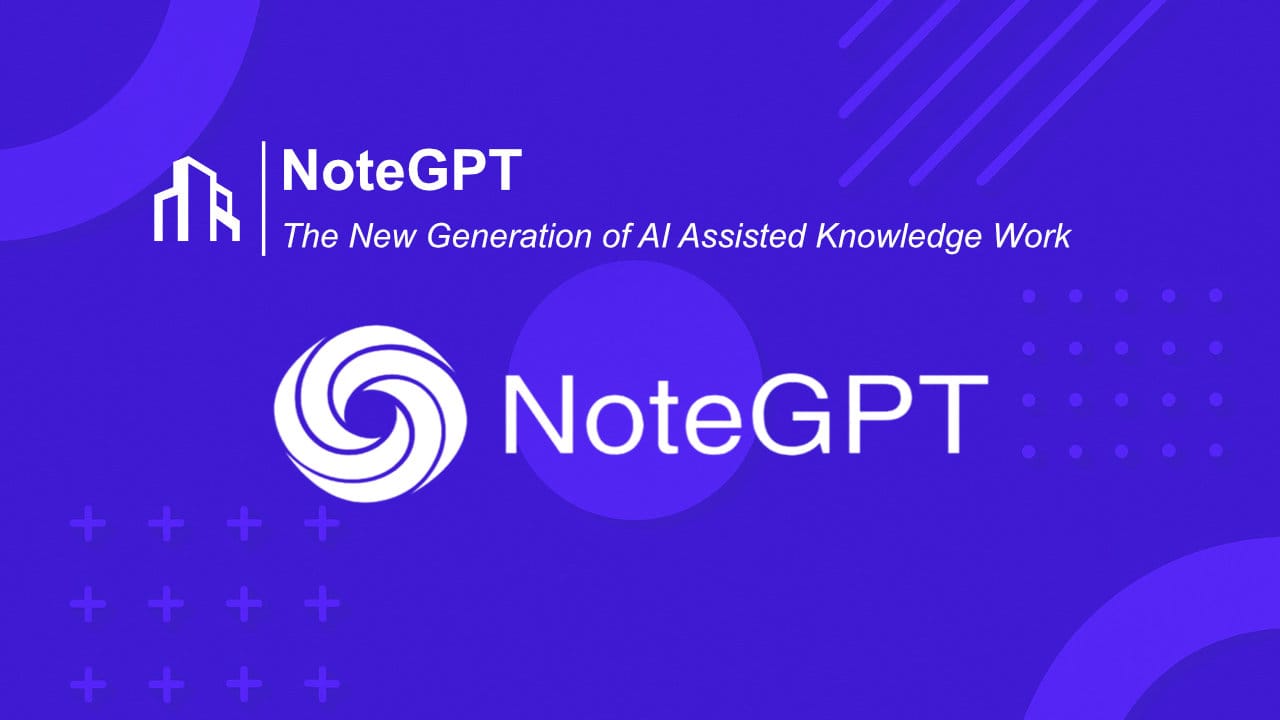NoteGPT and the New Generation of AI Assisted Knowledge Work
NoteGPT helps organisations process large volumes of information by converting documents, videos and audio into clear summaries, structured notes and reusable insights.

NoteGPT is becoming a valuable tool for organisations that handle large amounts of information every day. Instead of reviewing full documents, watching long videos or manually extracting key points, teams can rely on to process content automatically and deliver clear summaries, structured notes and visual overviews. This makes it a practical solution for companies that want to reduce the time spent on repetitive information handling and improve the quality of internal knowledge.
NoteGPT operates as a single workspace where different formats can be uploaded and analysed. Documents, PDFs, YouTube links, audio recordings and images all receive the same treatment. The platform extracts the core ideas and organises them in a format that is easy to use and easy to share.
What NoteGPT Does for Modern Teams
The tool focuses on simplicity and clarity. It removes unnecessary friction in daily workflows by converting unstructured content into understood and structured information.
Key capabilities
- Summaries that highlight essential insights from long materials
- Organised notes that break content into understandable sections
- Mind maps and visual structures that support quick reviews
- AI chat that allows users to ask direct questions about uploaded content
- Flashcards for onboarding, training and knowledge retention
- Slide outlines that help teams prepare presentations faster
These features are useful across many business environments. Marketing teams can extract messaging from webinars. HR teams can turn training materials into digestible modules. Consultants and analysts can scan reports without reading every page. Operational teams can use summaries to align faster during projects.
Why NoteGPT Fits Business Use Cases
Many organisations face the same challenge. Information grows faster than teams can process it. NoteGPT reduces this pressure by completing the early stages of analysis. Teams receive the structure they need without losing time on manual review.
The tool is especially helpful for:
Content review
Documents, slides, e-books and long-form materials can be reduced into actionable notes.
Video and audio processing
Recorded meetings, webinars or tutorials can be converted into text and summarised for internal use.
Research and knowledge gathering
Teams that depend on continuous learning can use NoteGPT to process complex or time-consuming sources.
Cross-team communication
Summaries and visual outlines help ensure that knowledge is shared consistently and clearly.
Important Limitations to Keep in Mind
NoteGPT is not designed as a full enterprise automation platform. It does not offer deep identity management, workflow automation or large-scale integrations. It also does not replace specialised meeting tools that track speakers or generate task lists. Highly technical documents may require expert validation after summarisation.
These limitations do not reduce its usefulness. They simply define the areas where the tool performs best.
Why NoteGPT Matters in Today’s AI Landscape
As organisations expand their digital content, tools that can interpret and structure information become essential. NoteGPT shows how AI can support knowledge work without replacing human judgment. It speeds up learning, shortens research cycles and makes content easier to reuse.
The tool reflects a broader shift toward AI-assisted content processing, where companies focus less on collecting information and more on understanding it.
Final Thoughts
NoteGPT is a practical and capable solution for any organisation that deals with continuous information flow. It reduces the time required to process videos, documents and audio, and it turns unstructured material into clear, reusable insights. For teams that value efficiency and clarity, NoteGPT offers a straightforward way to keep knowledge accessible and manageable without complicating workflows.
